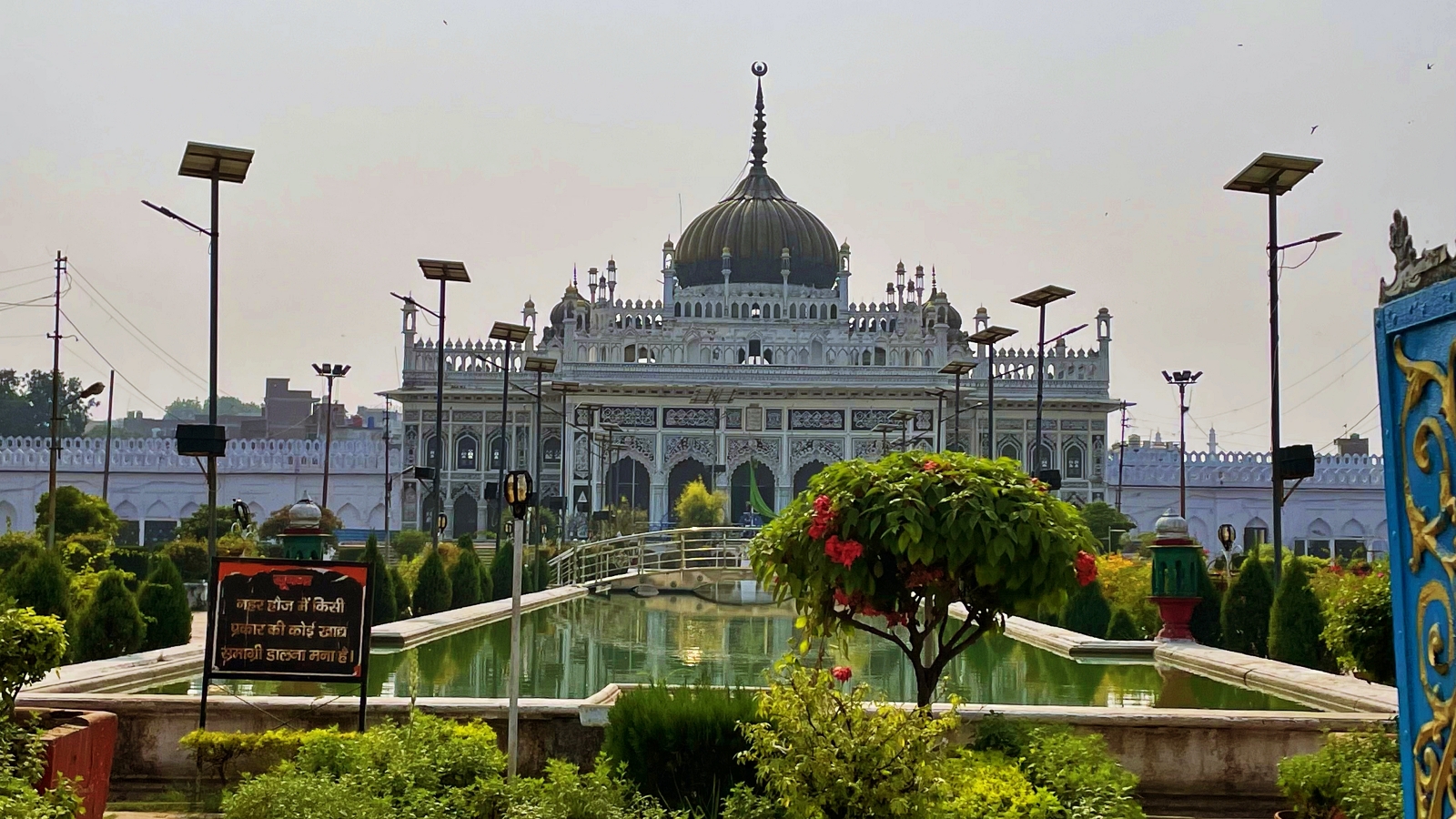Chota Imambara Hussainabad Mubarak in Lucknow
Chota Imambara (Imambara Hussainabad Mubarak) is a massive monument in Lucknow, Uttar Pradesh, India, near the Bara Imambara and the Rumi Darwaza, an imposing gateway on the connecting road. It took a total of 54 years to finish. In 1838, the Nawab of Awadh, Muhammad Ali Shah, constructed an Imambara (gathering place) for Shia Muslims, which was afterwards, utilised as a mausoleum for him and his mother, buried close to him. The importance of Panjetan, the sacred five, is emphasised through five main entrances.

This Imambara contains two halls and a Shehnasheen – a platform where Imam Husain’s Zarih is housed. Zarih is a graphic of the protective structure or grill that guards Imam Husain’s grave in Karbala, Iraq. The Azakhana’s grand hall features a green and white border, Belgian-made chandeliers, and numerous crystal glass lamp stands. On the outside, the Quranic texts are wonderfully calligraphed. The structure is also known as the ‘Palace of Lights’ because of its decorations and chandeliers. The Chota Imambara complex also houses the crown and official Tazias of Muhammad Ali Shah.
This building has numerous turrets and minarets as well as a gilded dome. You will find the tombs of Muhammad Ali Shah and his other family members within the Imambara. There are two ‘Taj Mahal replicas of Muhammad Ali Shah’s daughter and husband’s burials. The Taj Mahal copy, however, is scaled down. This supplementary structure, which faces the tomb, was constructed to maintain the architectural balance and symmetry of the Imambara. Aside from the tombs of Princess Asiya Begum and Nawab Janab Asiya Begum Sahiba, this structure also functions as a mausoleum. Two massive minarets stand on the edge of the elevated platform, while flowery motifs and Quranic calligraphy wonderfully embellish this mosque.
Outside the Imambara, you will find the seven-story Satkhanda watch tower. Despite its name, Satkhanda only has four storeys as its expansion was suspended after Ali Shah’s death. Satkhanda was built between 1837 and 1842, during the reign of Muhammad Ali Shah, to look exactly like the Pisa Leaning Tower and the Delhi Qutub Minar. Its primary purpose was to observe the moon. The building’s old plasterwork was defaced when refurbished with fresh cement. The Arabic writing on the walls is decorative. The Gomti River is the imambara’s only “source of water” for its fountains and other water components. Make sure to visit Bara and Chota Imambara while you’re in Lucknow.



